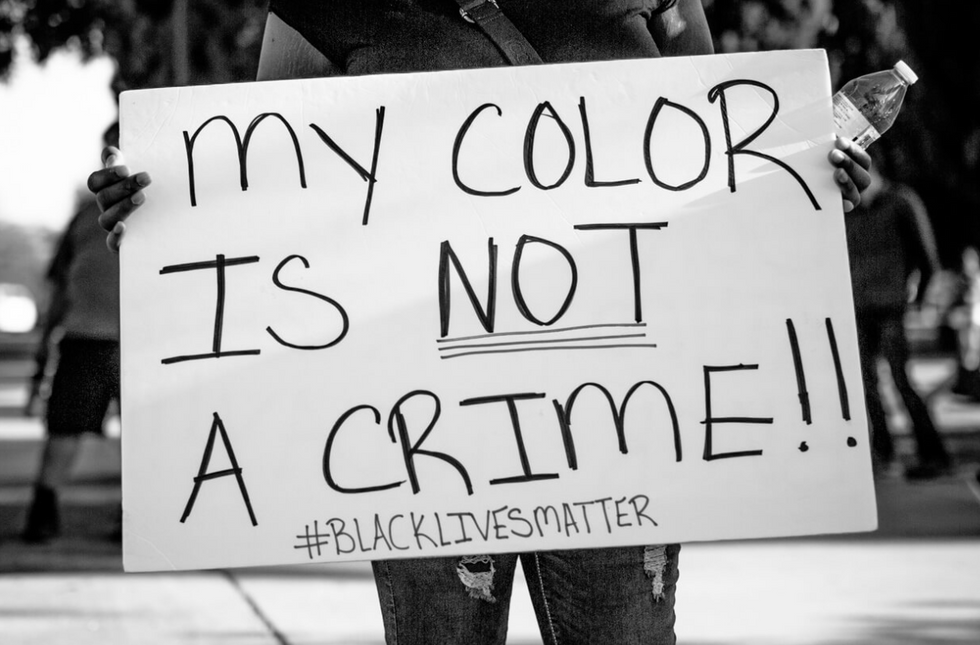What is real?
This question haunts me, as things that are beyond my brain’s capacity generally do. I’d categorize it with a few other seemingly impossible questions that linger in my mind, regarding human existence—questions of which I may never find answers to.
What is right and what is wrong?
Does racism exist?
What is the difference between white skin and black skin?
As much as I yearn for a simple answer, nothing is black and white.
The Oxford dictionary defines the adjective real as: 1. actually existing as a thing or occurring in fact; not imagined or supposed, 2. not imitation or artificial; genuine, 3. true or actual. Thus, if real is something not imagined then I have to see, hear, touch, taste or smell it—Real = physical evidence.
Is racism real? I can recall actual, historical events such as the bombing of the Church of Birmingham, AL in 1963 or the abduction of three civil rights workers who were burned to death in Philadelphia, MS in 1964. These events created real, concrete evidence: black burned bodies were recovered. See the bodies. Touch the burns. Smell the ashes. What were the motive of the white arsonist? The evidence points to white supremacy.
I can see the blackness of the skin of Lourdes Ashley Hunter, a black trans woman, and the whiteness of mine. I can hear the testosterone in her voice and the estrogen in mine. We do not endure the same struggles. I have never been falsely accused of pushing my neighbor down the stares. Nor have I ever been assaulted by local authorities who’s job is to keep me safe. Why do our differences give people a right to discriminate against Lourdes Ashley Hunter? What makes her unworthy of respect, but me worthy? Why is my whiteness superior to her blackness?
Hunter addressed the discrimination that people of color endure when she described her own interaction with the police force: “We know what happens when the police come in contact with black bodies. At that time I didn’t think that they would shoot me. I never even though that they would drag me out of my home. I thought I had done all the things that I was supposed to do.I went to school. I got an education. I’m doing good in the community. I moved into a nice neighborhood. I’m being a respectful person—all these things that they tell us to do. But none of that matters when your skin is black.”
Racism is not as blatant as it used to be in the 60’s. The evidence is harder to extract, and even harder to link back to racism. Coincidences happen far too often. Black, unarmed bodies just happen to be shot because they looked suspicious, rather than anyone admitting these bodies looked suspicious because they were black. After hearing Hunter speak of the violence she endured, I decided to do some research of my own. I did not goggle the percentages wrongly accused black bodies vs white bodies. Every case is different. Instead, I look at one account of many individuals' stories:
“Imperial, CA: Five California Highway Patrolmen pulled Tommy over for a missing front license plate. They attacked him with a K9 unit, tasered him, and then beat him to death. He was 32 years old.”
- https://mappingpoliceviolence.org/unarmed2014/
“Columbus, GA: Campus police received reports that Flint was seen loading a gun. Officers responded and Flint fled on foot. Officers fatally shot him in the back and the back of the neck. Flint turned out to be unarmed. He was 20 years old.”
- https://mappingpoliceviolence.org/unarmed2014/
“Cleveland, OH: Tamir was in a park playing with a BB gun. A caller reported that a male was point[ing] a pistol at random people, stating twice that the gun was "probably fake." Police pulled up within 10 feet from Tamir and shot him two seconds later in the abdomen. Neither officer administered first aid, instead arresting Tamir's sister who rushed to his aid. Tamir didn't receive first aid until four minutes later from a deputy who was nearby. He died soon after. He was 12 years old.”
- https://mappingpoliceviolence.org/unarmed2014/
What is real?
Lifeless black bodies are real.









































